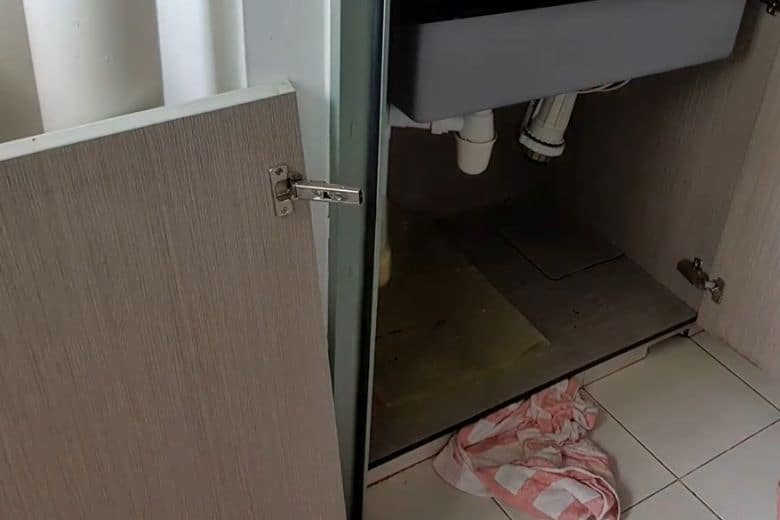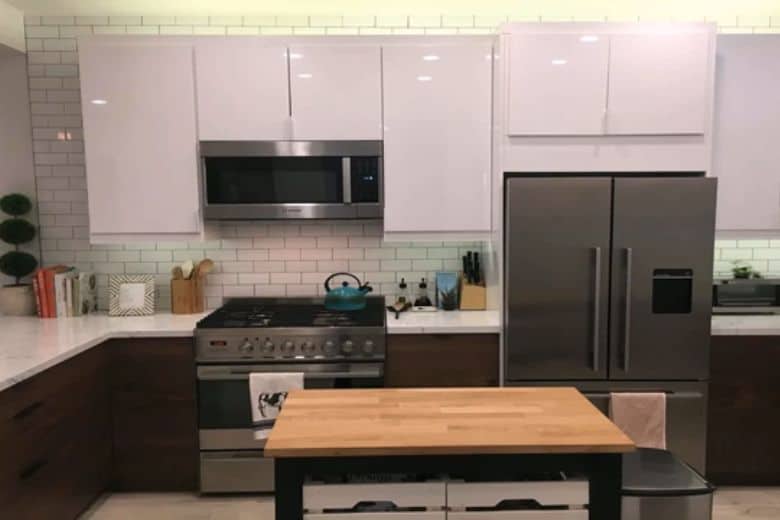A smooth and silent kitchen faucet is the unsung hero of our homes. It diligently serves us day in and day out. But when the kitchen faucet makes noise when turned on, it becomes the center of attention for all the wrong reasons.
However, this strange noise can result from various underlying issues, such as water pressure problems, air trapped in the pipes, or a worn-out valve. Understanding and diagnosing these issues can help restore your faucet’s smooth and quiet operation.
Eventually, today we have penned down to provide you with a comprehensive understanding of the issue, the causes, and how to address it effectively.
Let’s move forward with the typical reason behind the faucet’s symphony.
Why Does My Kitchen Faucet Makes Noise When Turned On?
Now, onto the big question: why is your faucet making that strange noise? There are several possible reasons.
1. Water Pressure Issues
Excessive water pressure can put a strain on the plumbing system. Eventually, it can create a loud rush or even a screech when you turn on your faucet. The forceful flow of water can create vibrations and result in a humming or whistling sound.
Think of it like trying to push a lot of traffic through a small tunnel—it’s bound to create chaos!
2. Worn-out Components
Like any appliance, constant usage can wear out specific components of your faucet, leading to strange noises when water runs through. Over time, regular wear and tear can lead to the faucet components becoming worn out.
3. Loose Parts
Loose or faulty components within the faucet can also contribute to noise. Loose screws, nuts, or washers can vibrate when water flows through the tap. Consequently, the faucet may vibrate as water passes through, causing noise.
4. Faulty Valves
Faulty valves may also cause the faucet to make noise as they may hinder the smooth flow of water.
5. Clogged Aerator
A clogged aerator can cause a hissing or sputtering sound as water is forced through the blocked pathway.
6. Sediment Buildup
Over time, mineral deposits and sediment can accumulate in the faucet aerator or cartridge, leading to restricted water flow. This buildup can result in turbulent water movement, causing noise when turning the faucet on.
7. Trapped Air
When air becomes trapped in your faucet or water pipes, it can cause a gurgling or hissing noise. It often occurs due to a problem with the water supply. Purging the system by turning on all faucets and flushing the toilets in your home can help release trapped air.
8. Improper Installation
If the faucet is not installed correctly, it may not be securely fastened to the sink or countertop. This lack of stability can cause vibrations and noise during water flow.
What Kind of Noise Are We Talking About?
Not all faucet noises are created equal. Identifying the type of noise your kitchen faucet makes when turned on is crucial to understanding the root of the problem. Here are some common types of noise you might hear:
- Squealing or Whining: It is often a sign of a component under strain, such as a valve or the faucet’s handle.
- Hammering or Knocking: It is typically caused by a sudden change in water pressure, a phenomenon known as a water hammer.
- Gurgling or Hissing: These noises usually indicate trapped air or a partial blockage within the water supply.
- Thumping: Thumping sounds often occur when water pressure is too high, or air is trapped in the pipes.
How to Fix Noisy Kitchen Faucets: Practical Solutions
Now we have identified the possible causes of a noisy kitchen faucet. Let’s explore the solutions to address each problem effectively.
Solution 1: Adjusting Water Pressure
To resolve water pressure-related noise issues:
- Adjust the water pressure regulator.
- Locate the regulator, usually located near the main water supply valve.
- Therefore, use a wrench to increase or decrease the pressure.
Be cautious while adjusting to avoid causing further damage or leaks in the plumbing system.
Solution 2: Consider Installing a Pressure Reducing Valve
When the water pressure is consistently high, installing a pressure-reducing valve (PRV) may be beneficial even after using a pressure regulator.
A PRV will help maintain more stable water pressure throughout your plumbing system, reducing the likelihood of water hammer and noise in your kitchen faucet.
Solution 3: Flushing the Pipes
If air bubbles are causing the noise, flushing the pipes will help alleviate the problem. Start by turning off the main water supply valve.
Then, open all the faucets in your home, including the kitchen faucet, and let the water flow for a few minutes. It will help release trapped air from the plumbing system.
Solution 4: Tightening or Replacing Components
For loose or faulty components, such as screws, washers, or internal parts, you must tighten them or replace them if necessary. Carefully inspect the faucet handle, spout, and any visible components for any signs of wear or damage.
Use the appropriate tools to tighten loose parts or consult a professional plumber for assistance.
Solution 5: Repairing or Replacing Valves
If the valve is causing the issue, it may need to be repaired or replaced to ensure smooth and silent operation.
Solution 6: Cleaning the Aerator or Cartridge
In case the sediment buildup is the cause of the noise, cleaning the aerator or cartridge can restore proper water flow. Therefore, will eliminate the noise issue. Remove the aerator or cartridge, depending on your faucet type.
Henceforth, soak it in vinegar and water to dissolve the mineral deposits. Scrub away any remaining residue and reinstall the cleaned component.
Solution 7: Flushing Out Sediment
Remove and clean the aerator to eliminate any sediment buildup obstructing the water flow.
Solution 8: Installing Water Hammer Arrestors
To address water hammer problems, installing water hammer arrestors can be an effective solution. These devices absorb the shockwaves caused by sudden water pressure changes, preventing the loud banging noise.
Consult a professional plumber to determine the size and type of water hammer arrestor needed for your specific plumbing system.
Preventing Future Noise
Aside from the mentioned solutions, maintaining your kitchen faucet is essential to prevent it from making noise when turned on. Here we have included three preventive measures you can take:
- Regular inspection and maintenance of your faucet. Because it will help catch any worn-out components before they start making noise.
- Frequently check the water pressure in your home to avoid issues with a water hammer.
- Ensure your water supply is free from excessive minerals to prevent scale buildup.
Frequently Asked Questions
Are all faucet noises a sign of a serious issue?
Answer: Not necessarily. Some noises can be fixed quickly, but a professional should inspect persistent or worsening noises.
What is a water hammer?
Answer: A water hammer is a hammering noise in your pipes caused by high water pressure or a fault in your pipe’s air chambers.
Can a noisy kitchen faucet cause damage to other plumbing fixtures?
Answer: A noisy kitchen faucet can sometimes indicate underlying issues within the plumbing system. It’s essential to address the noise promptly to prevent potential damage to other plumbing fixtures.
How can I prevent sediment build-up in my kitchen faucet?
Answer: To prevent sediment build-up, regularly clean the aerator and cartridge of your faucet. Additionally, installing a whole-house water filter can help minimize the amount of sediment entering your plumbing system.
How often should I flush out the sediment from my kitchen faucet?
Answer: It is recommended to flush out the sediment from your kitchen faucet at least once every few months to prevent buildup and ensure smooth water flow.
Conclusion
Understanding why your kitchen faucet makes noise when turned on is the first step in maintaining a serene kitchen environment. From identifying the types of sounds to recognizing what they might mean, you can ensure that your faucet remains functional and your home peaceful.
Remember, while DIY fixes can often solve minor problems, don’t hesitate to seek professional help when needed.
Paul Newman is a blogger who writes about plumbing and home improvement. Over the past 20 years, I have worked as a plumber. My passion is to share my knowledge and experience with others to improve their homes.




